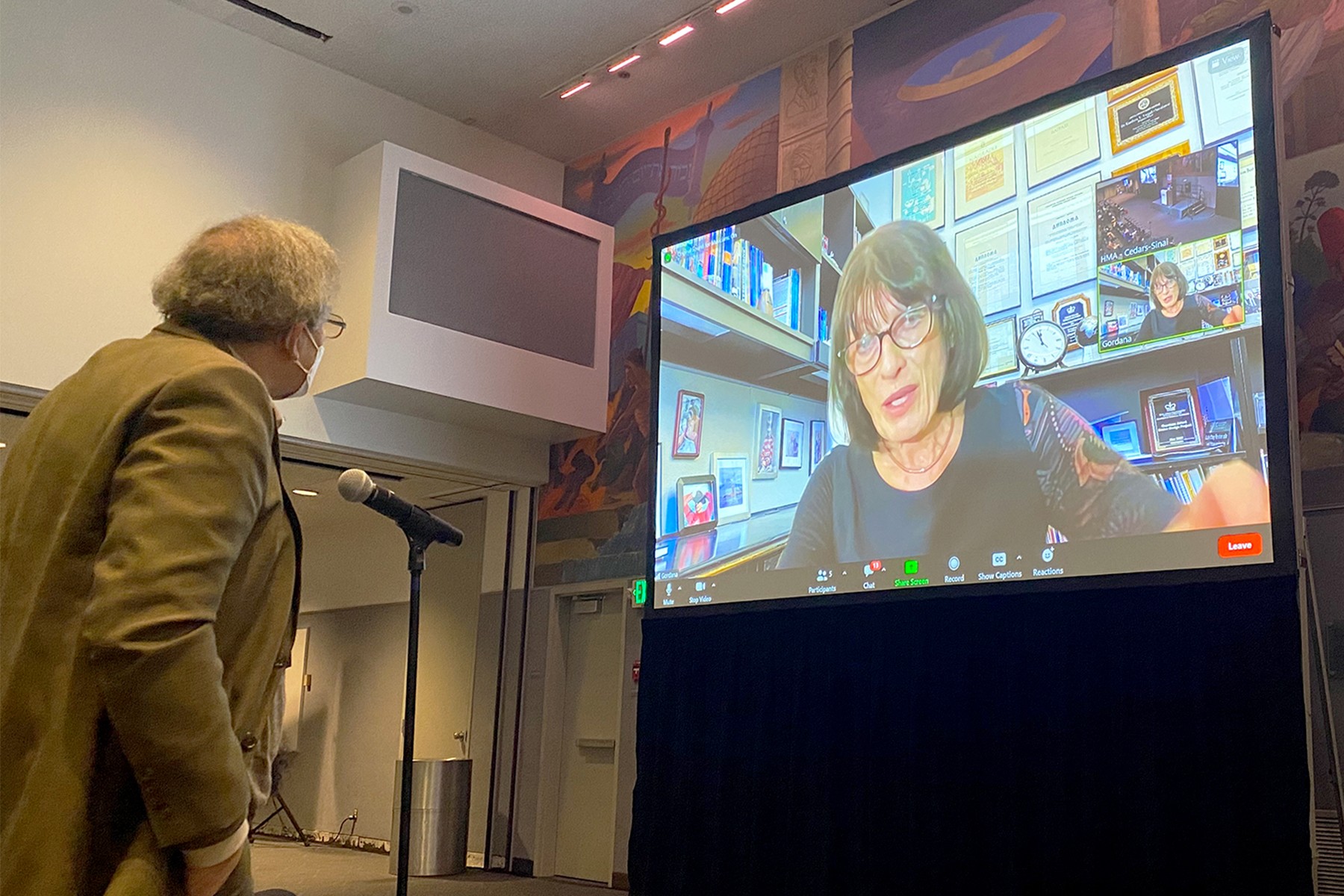Cell Symposium Highlights Potential of Stem Cell Therapies to Treat Variety of Diseases
When it comes to moving stem cell advancements from the lab to the clinic, collaboration is key. And on Dec. 8-11, scientists from around the world gathered at Cedars-Sinai for the third Cell Symposium to discuss the latest developments in therapeutic applications of stem cells.
 “The goal of the Cell Symposium is to really bring together a variety of clinicians, academic researchers and other stakeholders to discuss advances and to champion new ideas in the field,” said Clive Svendsen, PhD, executive director of the Cedars-Sinai Board of Governors Regenerative Medicine Institute and professor of Biomedical Sciences.
“The goal of the Cell Symposium is to really bring together a variety of clinicians, academic researchers and other stakeholders to discuss advances and to champion new ideas in the field,” said Clive Svendsen, PhD, executive director of the Cedars-Sinai Board of Governors Regenerative Medicine Institute and professor of Biomedical Sciences.
Cedars-Sinai, along with biomedical journal publisher Cell Press and the California Institute for Regenerative Medicine, sponsored the three-day conference.
“When I reflect on how this field has shifted over the past four years, I'm really heartened by all the progress that we've made in cell manufacturing and bringing stem cell therapies to clinical trials,” said Sheila Chari, PhD, editor-in-chief of Cell Stem Cell, in her opening remarks. “And I cannot stress enough how grateful I am that we are all here together. One of our main goals in organizing this conference is to give everyone the opportunity to meet new people, and to learn from each other and forge collaborations.”
The event opened with the first keynote speaker Gordana Vunjak-Novakovic, PhD, from Columbia University, a biomedical engineer who is known for her work with “organs on a chip,” miniature tissues and organs that mimic human physiology, to test new drugs and personalize patient treatment.
Vunjak-Novakovic joined virtually to discuss engineering functional human tissues for regenerative medicine and patient-specific organs on a chip for studies of human physiology. She discussed different organ cases that reflected on the engineering of clinically sized tissues to fit the needs of regenerative medicine.
“When you think about tissue engineering, each approach to tissue engineering is really around some kind of stem cells, which is the key way you envision engineering because this is going to have the potential for the formation of tissues of different kinds and under different conditions,” Vunjak-Novakovic said during her presentation.
Vunjak-Novakovic discussed some of the commonalities and differences between various organ systems and the different techniques in the tissue engineering field that have significant therapeutic value.
She ended the talk by emphasizing the value of collaboration among researchers.
“In this field, we’ve never collaborated as effectively as today,” said Vunjak-Novakovic. “All these challenges can only be addressed by working together, because only collectively, we can continue on making progress.
Other keynote speakers included. Hans Clevers, MD, PhD, the head of pharma research and early development at Roche, who spoke about stem cell-based organoids in human disease; and Douglas Melton, PhD, a renowned expert in stem cells, from Vertex Pharmaceuticals, who discussed stem cell-derived islets as a new approach to treat Type 1 diabetes.
The symposium also featured nearly 30 oral presentations on topics such as reactivation of fetal hemoglobin as a genetic therapy for hemoglobin disorders, cell rejuvenation and disease, prospects for basic science and biomanufacturing stem cells in space, ethical issues in the use of gene-editing technology on humans, and stem cell therapies for neurological diseases.
Poster sessions displayed more than 130 research studies involving dozens of institutions, including researchers from Korea, Thailand, Japan, Australia, Canada, Spain and other nations.
Follow Cedars-Sinai Academic Medicine on Twitter for more on the latest basic science and clinical research from Cedars-Sinai.




